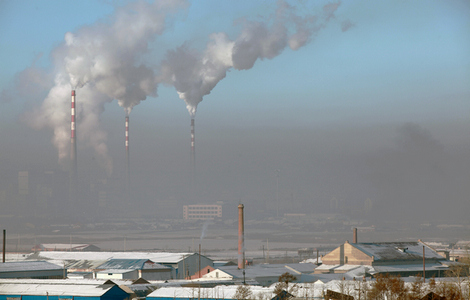|
|||||||||||
BEIJING - A majority of the country's most hazardous airborne pollutants are coming from industrial sources, according to a newly released report by the Institute of Public and Environmental Affairs.
Known as PM2.5 pollutants - hazardous particulates smaller than 2.5 microns - such pollution can travel deep into the lungs and damage people's respiratory systems.
According to the study, China emitted 13.2 million tons of PM2.5 in 2007, among which more than 9 million tons came from industrial sources such as petrochemical plants, cement kilns, and iron and steel smelters.
The transportation sector was responsible for nearly 600,000 tons of PM2.5 emissions that year, while residential activities contributed to 2.7 million tons of the fine particulate matter, according to the report, which cited a study on China's pollution inventory in 2007.
Such findings show industrial pollution is still the nation's biggest culprit for the worsening haze and smog in China's economically well-off eastern region.
"Therefore, curbing pollution from industrial sources is still the key in reducing PM2.5 and improving the nationwide air quality in the long run," said Ma Jun, director of the Institute of Public and Environmental Affairs.
"Anyway, clear regulations and restrictions already exist for curbing pollution from industrial sources, so it's relatively easier to start with fixing the industries first," he said.
But for major cities, such as Beijing and Shanghai, where polluting factories have been moved out of the urban areas, emissions from vehicles play a bigger role in their worsening PM2.5 levels, making it more difficult to tackle in the short run, said Ma.
Related Stories
China is fine with monitoring 'fine' particles 2011-12-09 19:59
Smog has air purifiers flying off the shelves 2011-12-07 07:40
Public backs ministry's air quality plans 2011-12-08 08:01
Hot Topics
HIV/AIDS, Egypt protest, Thanksgiving, climate change, global economic recovery, home prices, high-speed railways, school bus safety, Libya situation, Weekly photos
Editor's Picks

|

|

|

|

|

|







